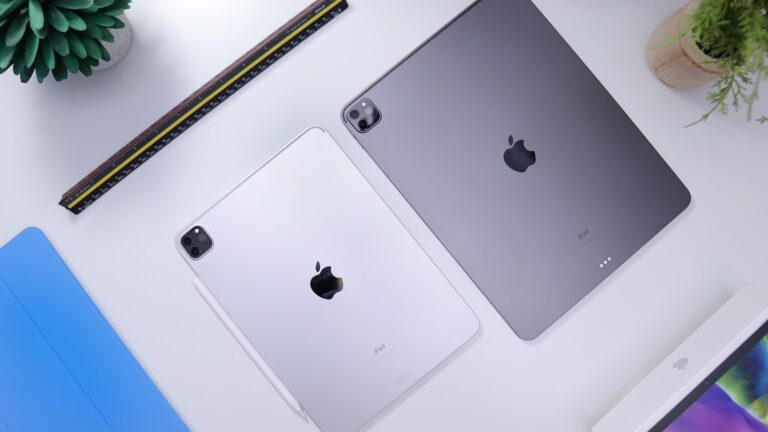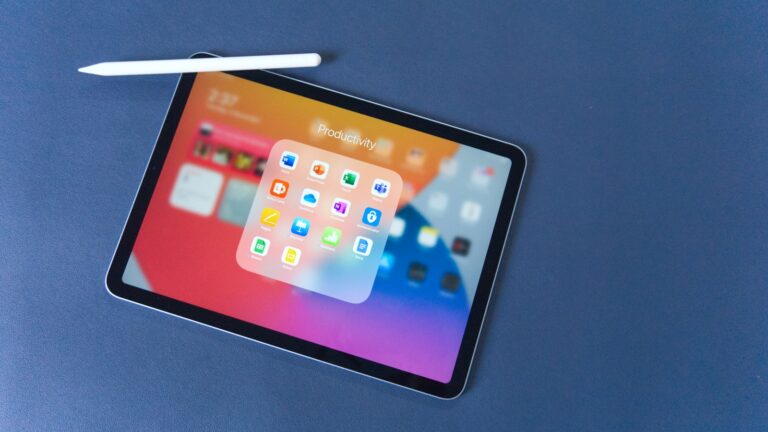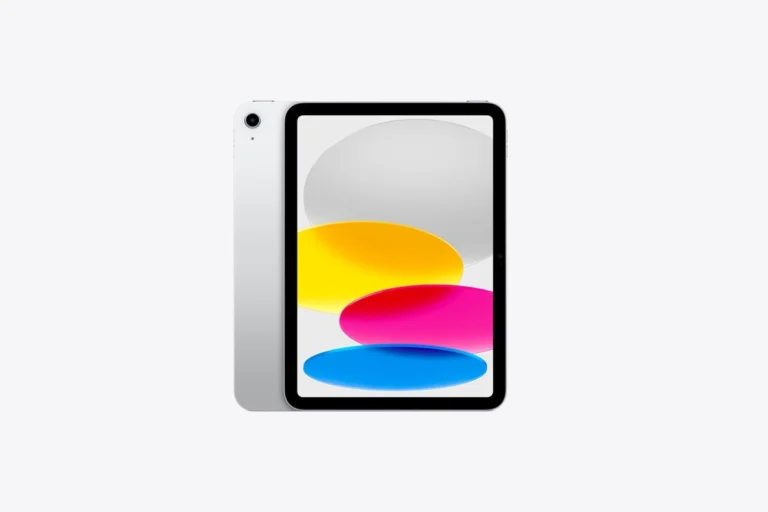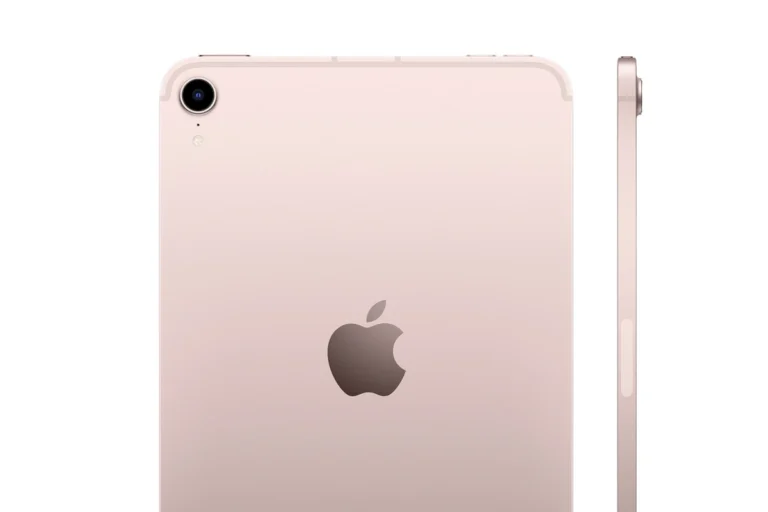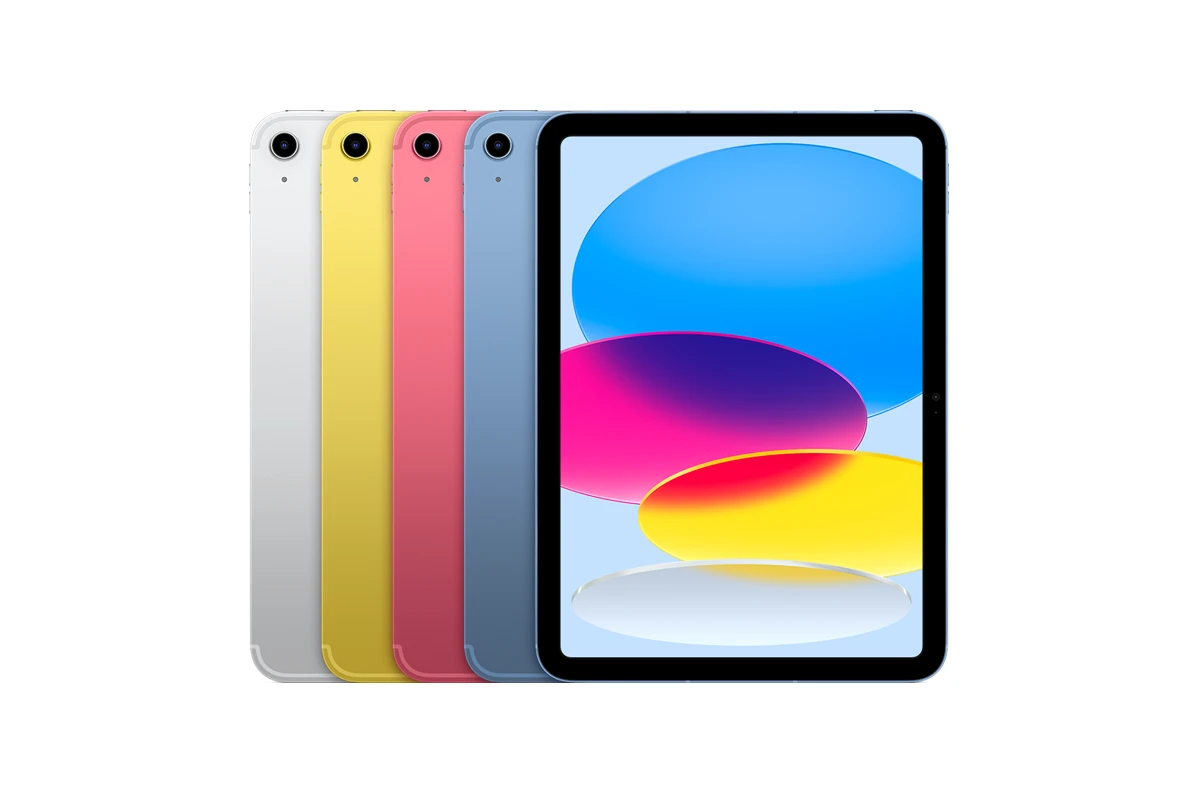
Choosing an iPad can feel overwhelming with all the options available today. From the powerful iPad Pro to the compact iPad mini, each model offers different features at various price points. The best iPad for you depends on how you plan to use it – whether for casual browsing, creative work, gaming, or as a laptop replacement.
Apple currently offers several iPad models that vary in screen size, processing power, and compatibility with accessories. The latest lineup includes the iPad Pro with its M2 chip for professionals, the mid-range iPad Air that balances performance and price, the standard iPad for everyday users, and the iPad mini for those who value portability. Understanding the key differences between these models will help you make a smart choice that fits your needs and budget.
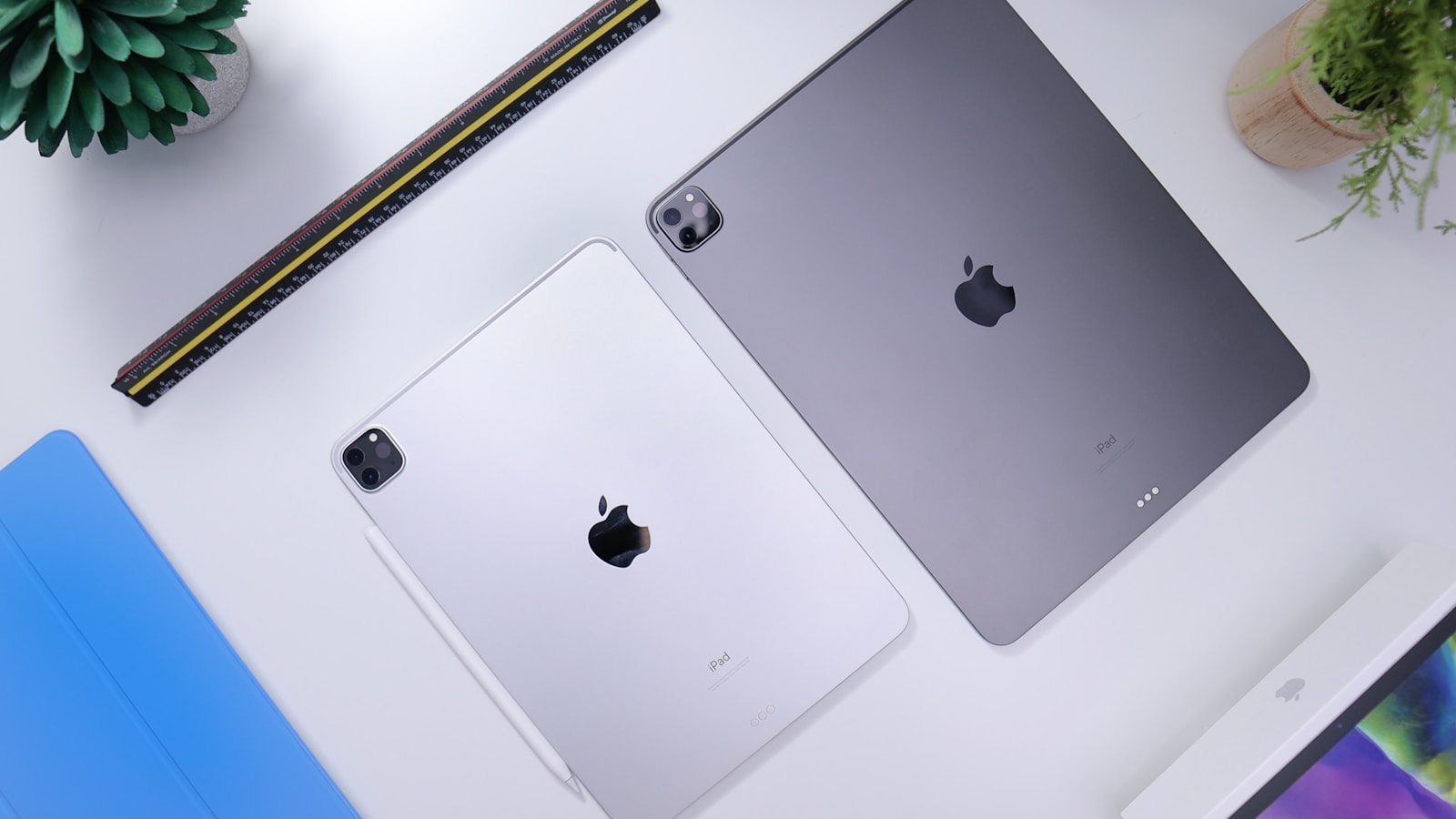
How to Choose an iPad
Apple’s iPad lineup in 2025 is broader and more capable than ever, but that also makes it more confusing. From the budget-friendly 10th-gen iPad to the powerhouse M4 iPad Pro, there’s now an iPad for every type of user — whether you’re a student, a creative professional, or just someone who wants a great tablet for media and web browsing. This guide will help you understand the differences, weigh your options, and choose the iPad that fits your needs and budget.
Step 1: Understand the Current iPad Lineup (2025)
Here are the main models Apple offers as of mid-2025:
| iPad Model | Display Size | Chip | Starting Price | Best For |
|---|---|---|---|---|
| iPad (10th gen) | 10.9″ | A14 Bionic | $349 | Budget users, kids, basic needs |
| iPad Air (6th gen) | 11″ / 13″ | M2 | $599 | Students, light productivity, artists |
| iPad mini (6th gen) | 8.3″ | A15 Bionic | $499 | Portability, reading, casual use |
| iPad Pro (2025) | 11″ / 13″ | M4 | $999 | Professionals, creative work, gaming |
Step 2: Define Your Primary Use Case
Ask yourself: What will I primarily use my iPad for?
✅ For Casual Use (Browsing, Streaming, Social Media)
- Best Choice: iPad (10th gen)
- Why: It’s affordable, has a large screen, USB-C charging, and supports accessories like keyboards and the 1st-gen Apple Pencil (USB-C).
✅ For Students or Light Productivity
- Best Choice: iPad Air (6th gen)
- Why: M2 chip delivers strong performance, supports Stage Manager multitasking, and works with the new Magic Keyboard and 2nd-gen Apple Pencil.
✅ For Travel & Portability
- Best Choice: iPad mini (6th gen)
- Why: Its compact size is ideal for reading, note-taking, gaming, or drone control. Still very fast, with solid battery life.
✅ For Professionals or Creatives
- Best Choice: iPad Pro (M4)
- Why: OLED display, M4 chip, Thunderbolt port, Apple Pencil Pro support, and software like Final Cut Pro and Logic Pro make this a laptop-level device.
Step 3: Consider Accessories You’ll Want
Each iPad supports different accessories, which can influence your decision.
| iPad Model | Pencil Support | Keyboard Support |
|---|---|---|
| iPad (10th gen) | Apple Pencil USB-C | Magic Keyboard Folio |
| iPad Air (M2) | Apple Pencil Pro | Magic Keyboard |
| iPad mini (6th) | Apple Pencil 2 | None (no full-size keyboard support) |
| iPad Pro (M4) | Apple Pencil Pro | Magic Keyboard (2024) |
If drawing or handwriting is important, make sure to factor in Apple Pencil compatibility. The Apple Pencil Pro, introduced in 2024, only works with M2 iPads and above.
Step 4: Know the Chip and Performance Levels
- A14 / A15 Bionic (iPad, mini): Fast enough for general use, light gaming, and multitasking.
- M2 (Air): Great for students and light creatives, and enables desktop-class workflows like Stage Manager and external display support.
- M4 (Pro): Blazing-fast performance for pro apps, multitasking, and gaming — overkill for casual users, but perfect for power users.
Step 5: Choose the Right Screen Size
| Use Case | Ideal Screen Size |
|---|---|
| Reading on the go | 8.3″ (iPad mini) |
| Students, note-taking | 10.9″–11″ (iPad, Air, Pro) |
| Art, video editing, multitasking | 13″ (Air or Pro) |
| General entertainment and browsing | 10.9″–11″ |
OLED displays on the new iPad Pro models offer deeper blacks and better contrast, ideal for artists or video editors.
Step 6: Set Your Budget
- Under $400: iPad (10th gen) – best value
- $400–$700: iPad mini or iPad Air (base)
- $700–$1,200: Higher-end Airs or base Pro
- $1,200+: iPad Pro fully equipped (with Pencil and Keyboard)
Remember: accessories can add $250–$500 depending on what you need.
Final Tips Before You Buy
- Refurbished iPads from Apple are often great deals and come with warranties.
- Storage matters: 64GB may be enough for light users, but go 256GB+ if you work with media or files.
- Wi-Fi vs. Cellular: Wi-Fi is enough for most users; Cellular models cost more and require a data plan.
Summary Table: Which iPad is Right for You?
| You Are… | Best iPad (2025) |
|---|---|
| On a tight budget | iPad (10th gen) |
| A student | iPad Air (6th gen) |
| A frequent traveler/reader | iPad mini (6th gen) |
| A digital artist or filmmaker | iPad Pro (M4, 11″ or 13″) |
| Just want a solid all-rounder | iPad Air (6th gen, 11″) |
Choosing the right iPad in 2025 comes down to matching the device’s capabilities to your actual needs — and not overpaying for power you’ll never use. Apple has refined the iPad into a versatile tool that fits into almost any lifestyle or workflow, so once you identify your priorities, your perfect iPad will be clear.
Key Takeaways
- Choose an iPad based on your specific needs, with options ranging from the basic model for casual use to the Pro version for demanding professional work.
- Consider factors like screen size, processor speed, Apple Pencil compatibility, and keyboard options before making your final decision.
- Compare important specifications such as battery life, storage capacity, and display quality to find the best value for your budget.
Evaluating iPad Models
Choosing the right iPad requires understanding the key differences between models and identifying which features matter most for your specific needs. Apple offers several distinct options that vary in size, power, and price.
iPad Lineup Overview
Apple currently offers four main iPad models: the standard iPad, iPad mini, iPad Air, and iPad Pro. Each serves different user needs and comes at different price points.
The standard iPad is Apple’s most affordable tablet option, ideal for casual users, students, and families. The iPad (2022) features a redesigned look with USB-C while the iPad (2021) remains available as a budget option.
The iPad mini is the smallest model with an 8.3-inch display. It’s perfect for portability while still offering impressive performance. If you need a tablet that fits in a small bag or even some pockets, this compact powerhouse is worth considering.
The iPad Air sits in the middle of the lineup, balancing performance and price. It offers many premium features without the Pro price tag.
The iPad Pro comes in 11-inch and 13-inch versions and represents Apple’s most powerful tablet experience with the M-series chips.
Comparing iPad Air, Mini, and Pro Features
| Feature | iPad Air | iPad Mini | iPad Pro |
|---|---|---|---|
| Display | 10.9″ Liquid Retina | 8.3″ Liquid Retina | 11″ or 13″ Liquid Retina XDR |
| Chip | M1 or M2 | A15 Bionic | M2 or newer |
| Apple Pencil | 2nd gen compatible | 2nd gen compatible | 2nd gen compatible |
| Price Range | Mid-range | Mid-range | Premium |
The iPad Air offers a sweet spot of performance and value. It supports the Apple Pencil 2, has a vibrant display, and runs on powerful M-series chips making it great for creative work and productivity.
The iPad Mini packs surprising power in its small frame. Despite its size, it supports the Apple Pencil 2 and has a powerful A15 chip. It’s ideal for reading, note-taking, and on-the-go use.
The iPad Pro models feature the best displays, cameras, and processors in the lineup. They include additional features like ProMotion (120Hz refresh rate), better speaker systems, and Face ID. The 13-inch Pro particularly excels for creative professionals who need maximum screen space.
Understanding iPad Generations
Apple updates different iPad models on varying schedules, which can make tracking generations confusing. The standard iPad is currently on its 10th generation, with significant design changes from the 9th gen.
The iPad mini is in its 6th generation, with a potential iPad mini 7 rumored for release. Each new generation typically brings processor upgrades and occasionally display improvements.
The iPad Air and iPad Pro lines receive less frequent but more substantial updates. When shopping, always check the release date and processor type to determine how recent the model is.
Processor generations matter significantly for longevity. Newer chips mean longer software support and better performance with demanding apps. The jump from A-series chips to M-series chips represented a major performance leap.
When evaluating older models, consider that Apple typically provides software updates for 5-7 years after release. A slightly older model can offer excellent value if you don’t need cutting-edge features.
Assessing Performance Needs
When choosing an iPad, understanding the processing power you need is essential. Different models offer varying capabilities that affect everything from basic browsing to demanding creative work.
Processor Capabilities and Chips
iPads come with different processors that significantly impact what tasks you can perform. The latest iPad Pro models feature the powerful M2 chip, which offers desktop-class performance for professional tasks. The iPad Air typically includes slightly older but still capable M-series chips.
For more budget-friendly options, the standard iPad uses the A13 Bionic or newer A-series chips. The iPad Mini currently runs on the A15 Bionic, which provides excellent performance in a compact form.
Consider these processor capabilities:
- M-series chips (M2, M4): Best for professional video editing, 3D modeling, and design work
- A15 Bionic: Great for casual gaming, photo editing, and multitasking
- A13 Bionic: Suitable for web browsing, streaming, and basic productivity
Your choice should align with how you’ll use your iPad most frequently.
Comparing Speed and Multitasking
Different iPad models handle multitasking capabilities with varying degrees of efficiency. This becomes important if you frequently work with multiple apps simultaneously.
The latest Pro models with M-series chips can handle dozens of browser tabs, multiple app windows, and background processes without slowdowns. They offer desktop-like multitasking with Stage Manager.
Mid-range models like the iPad Air provide good multitasking performance but may slow slightly with extremely demanding apps. Entry-level iPads can still split-screen effectively but might struggle with heavy professional applications.
RAM is a key factor here:
- 8-16GB RAM (Pro models): Seamless multitasking with pro apps
- 4-8GB RAM (Air, Mini): Good for moderate multitasking
- 3-4GB RAM (Standard iPad): Basic multitasking
Gaming and Media Consumption
For gaming enthusiasts, processor power directly affects which games you can play and how well they run. The latest iPad models with M-series chips can handle console-quality games with ease.
iPads with A15 Bionic chips offer excellent gaming performance for most titles, while the A13 Bionic handles casual games smoothly but may struggle with the most demanding titles at highest settings.
For media consumption, any recent iPad model performs well, but differences appear in:
- Display quality: Pro models offer brighter screens with higher refresh rates
- Storage options: Consider 128GB+ if you download many games or videos
- Battery efficiency: Newer chips typically offer better battery life while gaming
If you’re primarily watching videos, even the basic iPad will serve you well, while serious gamers should consider the Air or Pro lines.
Display and Visuals
The iPad’s display quality significantly affects your user experience, from viewing photos to reading text. Different iPad models offer varying screen technologies that impact color accuracy, brightness, and overall visual performance.
Understanding Screen Types
iPad displays come in several technologies, each offering unique benefits. The basic iPad uses a standard Retina display, which provides sharp text and clear images for everyday use.
Moving up the line, iPad Air models feature Liquid Retina displays with enhanced color accuracy and brightness. These displays use advanced LCD technology with improved color management for more vivid images.
At the premium end, iPad Pro models showcase Ultra Retina XDR displays with mini-LED technology that delivers exceptional contrast ratios. This technology allows darker blacks and brighter highlights, making content appear more lifelike.
The newest Pro models also feature OLED displays in some sizes, which offer perfect blacks and incredible color accuracy. This makes them ideal for professional photo editing and design work.
Resolution and Refresh Rate
Resolution directly impacts image clarity and detail on your iPad. Higher-resolution displays show sharper text and more detailed images. Most current iPads feature similar pixel densities, so text appears equally sharp across different size models.
The refresh rate measures how many times per second your screen updates. Standard iPads have 60Hz displays, meaning the screen refreshes 60 times per second. This works well for basic tasks and media consumption.
iPad Pro models offer ProMotion technology with 120Hz refresh rates, making scrolling smoother and responsiveness better. This higher refresh rate is particularly valuable for drawing, gaming, and any activity requiring precise timing.
When choosing an iPad, consider whether the improved visual experience of premium display technologies justifies the higher price for your specific needs. For digital artists and designers, the investment in ProMotion technology can significantly improve your workflow.
Design and Usability
The iPad you choose will significantly impact your daily interaction with the device. The physical attributes and accessory options can make or break your experience, especially if you have specific use cases in mind.
Size and Portability
iPad size options range from the compact 8.3-inch iPad Mini to the expansive 12.9-inch iPad Pro. Consider how you’ll use your iPad most often. Will you primarily read on the couch, take notes in meetings, or create detailed artwork?
The larger screens are better for detailed design work, while smaller models excel in portability. If you commute daily or travel frequently, the iPad Mini or standard iPad (10.9-inch) might be your best bet. These models easily fit in smaller bags and can be comfortably held in one hand for extended periods.
Weight differences are substantial too. The iPad Pro 12.9-inch weighs almost twice as much as the iPad Mini. This matters if you’ll hold your device for long reading or viewing sessions.
Ergonomics and Accessories Compatibility
Your iPad’s usability extends beyond the device itself to the ecosystem of accessories that enhance its functionality. The latest iPad models feature USB-C ports rather than Lightning, offering better connectivity options for external drives and displays.
Consider which Apple Pencil version is compatible with your chosen iPad. The Apple Pencil 2 offers more features but doesn’t work with all models. For serious note-taking or artistic work, pencil compatibility should be a priority.
Keyboard options vary by iPad size. The Magic Keyboard provides a laptop-like experience but adds considerable weight and cost. Folio keyboards offer protection while enhancing productivity.
Screen protectors are recommended for all iPads, especially if you’ll use an Apple Pencil. Matte protectors reduce glare and provide a paper-like feel for drawing, while glass protectors maintain the original screen clarity.
Connectivity and Expansion
iPad connectivity options determine how you’ll connect accessories and transfer data. The port type and peripheral support directly impact your productivity and workflow options.
USB-C versus Lightning Port
The iPad lineup has been transitioning from Lightning to USB-C ports. Basic iPad models released before 2022 use Lightning, while newer iPads, including all iPad Pro, Air, and mini models, use USB-C. This distinction matters significantly.
USB-C offers faster data transfer speeds—essential if you work with large files like videos or photos. It also provides more versatile charging options, allowing you to use the same charger for your laptop, phone, and other devices.
Another advantage of USB-C iPads is their compatibility with external displays. You can connect to monitors with higher resolution output, which is particularly useful for presentations or extending your workspace.
When choosing your iPad, consider your existing accessories. If you already own Lightning cables and adapters, switching to USB-C means purchasing new ones.
Peripheral Device Support
Your iPad’s usefulness expands dramatically with the right accessories. The Apple Pencil comes in different generations, with varying compatibility across iPad models. First-generation Pencils work with older iPads, while newer models support the second generation or Apple Pencil Pro.
For productivity, the Magic Keyboard transforms your iPad into a laptop-like device. It’s compatible with iPad Pro and newer iPad Air models, offering a trackpad and backlit keys.
Consider these key peripheral compatibility points:
- Keyboards: Besides the Magic Keyboard, Smart Keyboard Folio and third-party options exist at different price points
- Hubs/Dongles: USB-C iPads can connect to hubs for additional ports
- External Storage: USB-C models allow direct connection to external drives
Your intended use—whether for school, creative work, or business—should guide your peripheral selection.
Operating System and Ecosystem
iPadOS offers unique features designed specifically for iPad users while seamlessly connecting with other Apple devices. The system provides both powerful functionality and ease of use that enhances your iPad experience.
Advantages of iPadOS
iPadOS sets iPads apart from other tablets with its specialized features. Unlike regular iOS, iPadOS includes multitasking capabilities like Split View and Slide Over that let you work with multiple apps simultaneously.
The operating system supports Apple Pencil with low latency and precision, making note-taking and drawing feel natural. This is especially valuable for students and creative professionals.
File management in iPadOS has improved significantly with the Files app, which works similar to a desktop computer. You can organize documents, connect to cloud services, and use external storage.
iPadOS receives regular updates with new features and security improvements. Apple typically supports iPads with updates for 5-7 years, giving you excellent long-term value compared to Android tablets.
Integration with Apple Ecosystem
Your iPad works best when connected with other Apple devices in the ecosystem. Features like Handoff let you start tasks on your iPhone and finish them on your iPad seamlessly.
Universal Clipboard allows copying text or images on one device and pasting on another. AirDrop makes sharing files between Apple devices quick and wireless without email or messaging apps.
iCloud keeps your photos, documents, and app data synchronized across devices. Start working on a document on your Mac and continue exactly where you left off on your iPad.
If you own an iPhone, your iPad can receive and send text messages or make phone calls through your phone. Apple Watch users can unlock their iPad automatically when wearing their watch nearby.
The Apple ecosystem setup creates a unified experience that increases productivity and convenience beyond what any single device can offer.
Storage and Memory Considerations
When buying an iPad, storage and memory options greatly impact your day-to-day experience. Making the right choice means understanding your usage needs and how these specifications affect performance.
Choosing the Right Storage Capacity
iPad storage capacity ranges from 64GB on base models to a massive 2TB on high-end devices. For casual users who mainly browse, email, and stream content, 128GB might be sufficient. However, many tech enthusiasts consider 256GB the minimum practical amount for comfortable usage.
If you work with large files like videos, photos, or creative projects, consider these guidelines:
- 64GB: Only for light users who stream most content
- 128GB: Good for average users who don’t store many apps or files
- 256GB: Recommended for most users
- 512GB+: For professionals working with large media files
Remember that iPadOS takes up significant space right out of the box. The new iPad Pro models also offer different RAM configurations based on storage – only the 1TB and 2TB versions come with 16GB RAM, while smaller storage options include 8GB RAM.
If you plan to use your iPad for years, choosing more storage than you currently need provides valuable future-proofing.
Special Features and Technologies
Modern iPads come with unique features that extend their functionality beyond basic tablet use. These special technologies can dramatically change how you interact with your device and what you can accomplish with it.
Apple Pencil and Magic Keyboard Compatibility
Not all iPads work with the same accessories, which can impact your creative and productivity potential. The iPad Pro and iPad Air models support the latest Apple Pencil (2nd generation), giving you precision drawing with pressure sensitivity and tilt recognition.
The entry-level iPad works with the Apple Pencil (1st generation) or the newer USB-C Apple Pencil, which offers fewer features but still enables note-taking and drawing capabilities.
For typing, the Magic Keyboard provides a laptop-like experience with a trackpad and backlit keys. It’s compatible with iPad Pro and newer iPad Air models but won’t work with the standard iPad or iPad mini.
Before purchasing accessories, check compatibility with your specific iPad model to avoid disappointment. These add-ons significantly increase your iPad’s versatility but also add to the total cost.
Innovations like Face ID and Center Stage
Modern iPads include advanced technologies that enhance your user experience. The high-end iPad Pro models feature Face ID, allowing you to unlock your device and authenticate purchases just by looking at it.
Other iPads use Touch ID built into the power button or home button depending on the model.
Center Stage is a clever feature available on newer iPads with ultra-wide front cameras. It automatically keeps you centered in the frame during video calls, even as you move around. The camera pans and zooms to include anyone who joins you.
ProMotion technology on iPad Pro models delivers refresh rates up to 120Hz, making scrolling smoother and reducing Apple Pencil latency. This matters if you’re doing detailed drawing or design work.
These features aren’t just extras—they can fundamentally change how you use your iPad and should factor into your purchasing decision.
Practical Applications
iPads have evolved beyond simple media consumption devices into powerful tools for work and creativity. They can tackle tasks once reserved for traditional computers while offering unique advantages through touch and Apple Pencil integration.
Laptop Replacement Potential
If you’re considering an iPad as your main computing device, you’ll need to evaluate your specific needs. The iPad Pro and iPad Air models with M-series chips offer laptop-level performance for many tasks.
When paired with accessories like the Magic Keyboard or Smart Keyboard Folio, iPads provide a laptop-like experience with the added versatility of a tablet. iPadOS supports multitasking features like Split View and Slide Over, helping you work with multiple apps simultaneously.
File management has improved significantly with the Files app, which works with cloud services and external drives. However, some specialized software may still require a traditional computer, particularly industry-specific programs or advanced development tools.
Battery life typically exceeds most laptops, making iPads excellent for all-day productivity without hunting for outlets.
Professional Tasks: Video Editing and Note-Taking
iPads excel at creative professional tasks that benefit from direct manipulation. For video editing, apps like LumaFusion and iMovie offer powerful capabilities that take advantage of the iPad’s processing power.
The latest iPad Pro models handle 4K video editing smoothly, with their high-quality displays providing accurate color reproduction for professional work. The touch interface makes editing more intuitive for many users than traditional mouse-based systems.
For note-taking, iPads paired with Apple Pencil transform into sophisticated digital notebooks. Apps like Notability, GoodNotes, and Apple Notes offer features including:
- Handwriting recognition
- Audio recording synced with notes
- PDF annotation
- Cloud synchronization
Many professionals find the iPad’s note-taking capabilities superior to paper, with the ability to organize, search, and share notes instantly. The Apple Pencil’s low latency makes writing feel natural, with palm rejection technology allowing you to rest your hand on the screen while writing.
Purchasing Decisions
Choosing the right iPad involves weighing several factors including price, features, and intended usage. Making an informed decision can save you money while ensuring you get a device that meets your specific requirements.
Determining the Best iPad for Your Needs
When selecting an iPad, start by considering what you’ll primarily use it for. The iPad lineup in 2025 includes several models with distinct capabilities and price points.
For casual browsing and media consumption, the base iPad offers excellent value. It handles everyday tasks well without breaking the bank.
If you need more power for creative work or multitasking, consider the iPad Air or Pro models. The Pro versions include advanced features like ProMotion displays and M-series chips that benefit graphic designers and video editors.
Screen size matters too. The 11-inch models balance portability and usability, while 12.9-inch versions provide more screen real estate for productivity.
Storage is another crucial factor. Choose at least 128GB if you plan to download many apps or store photos and videos locally.
Considerations for Buying Refurbished Models
Refurbished iPads can offer significant savings while providing nearly the same experience as new devices. Apple’s official refurbished store provides thoroughly tested devices with a one-year warranty.
When buying refurbished, check the following:
- Battery health: Look for 85% capacity or higher
- Physical condition: Minor cosmetic imperfections are normal
- Model year: Newer models receive software updates longer
- Return policy: Ensure you have at least 14 days to return
Third-party refurbishers may offer lower prices, but verify their reputation and warranty terms before purchasing. Always check that the device isn’t activation-locked to another user.
The sweet spot for refurbished models is typically 1-2 years old, as they balance modern features with meaningful discounts. Many refurbished iPads from 2023-2024 remain excellent choices in 2025.
Frequently Asked Questions
Choosing the right iPad involves evaluating several key factors including your intended use, budget constraints, and specific feature requirements. Here are answers to common questions that may arise during your decision process.
What factors should be considered when selecting an iPad model for personal use?
When selecting an iPad for personal use, consider your primary activities like media consumption, gaming, or creative work. Your budget is also crucial, as iPad prices range from $329 for the basic model to over $2,000 for high-end iPad Pros.
Think about portability needs – if you’ll carry your device frequently, a lighter iPad Air or iPad mini might be preferable. For home use mainly, screen size might matter more.
Consider accessories you might need, such as the Apple Pencil or Magic Keyboard, as not all accessories are compatible with every iPad model.
How do you determine the best iPad generation for your needs?
To determine the best iPad generation, consider the processor performance required for your tasks. Newer models with M-series chips offer significantly better performance for demanding apps.
Evaluate how long you plan to keep your iPad. The latest models typically receive software updates for 5-7 years, while older models may lose support sooner.
Look at the expected lifespan of iPads in your decision process. Most iPads remain functional for 4-5 years, though battery life will gradually decrease over time.
What are the key differences between the iPad Air and the iPad Pro models?
The iPad Air offers a balance of performance and affordability with an M-series chip, while the iPad Pro delivers premium features at a higher price point. Pro models feature ProMotion display technology with 120Hz refresh rates for smoother scrolling.
iPad Pro models typically offer more storage options, better cameras, and Face ID, while Air models use Touch ID. The Pro also comes in a larger 12.9-inch size with mini-LED technology for improved contrast.
For most users, the differences between iPad and iPad Air matter more than comparing Air to Pro models, unless you need the absolute highest performance.
In what scenarios is a refurbished iPad a smart purchase choice?
Refurbished iPads make sense when you’re on a tight budget but still want a reliable device. Apple’s certified refurbished products include a new battery, outer shell, and full warranty.
Students or casual users who don’t need cutting-edge performance can save 15-20% by choosing refurbished models. These devices undergo thorough testing and often look indistinguishable from new units.
When buying refurbished, verify the iPadOS support status to ensure it will receive updates for several years. Avoid models older than 3-4 years as they may lose software support soon.
What is the significance of choosing an iPad with the right storage capacity?
Storage capacity directly impacts how much content you can keep on your iPad without relying on cloud services. For basic use with few apps and minimal media, 64GB might suffice.
If you plan to download many games, store photos, or work with video, 256GB or more is recommended. Remember that iPads don’t support expandable storage, so you can’t add more later.
The price difference between storage tiers is significant—often $150-200 per jump—so carefully assess your needs to avoid overspending on unnecessary capacity.
How do the features of the iPad mini compare to other iPad models for on-the-go use?
The iPad mini’s 8.3-inch display makes it highly portable while still providing enough screen space for reading, note-taking, and media consumption. It weighs just 0.65 pounds, making it significantly lighter than other iPads.
Despite its smaller size, the iPad mini doesn’t compromise on performance. It features an A15 Bionic chip similar to newer iPhones, making it powerful enough for most tasks including gaming.
The mini supports Apple Pencil 2, making it excellent for digital note-taking or sketching on the go. Its size allows one-handed use, which is perfect for reading or quick tasks while traveling.


